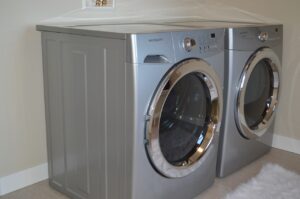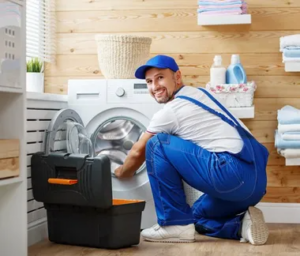Introduction: Understanding the Basics of Wolf Ovens
Wolf ovens are known for their high-quality craftsmanship and exceptional performance. These ovens are designed to provide precise temperature control and even heat distribution, making them a favorite among professional chefs and cooking enthusiasts alike. With their sleek design and advanced features, Wolf ovens are a valuable addition to any kitchen.
Proper maintenance and repair are essential to ensure that your Wolf oven continues to perform at its best. Regular maintenance can help prevent issues from arising and extend the lifespan of your oven. However, even with proper care, problems may still occur. It is important to be able to identify common issues and know how to troubleshoot and fix them.
Identifying Common Issues with Your Wolf Oven
While Wolf ovens are known for their reliability, there are a few common issues that may arise over time. These issues can range from minor inconveniences to more serious problems that require professional repair. By being aware of these common issues, you can quickly identify when your oven needs attention.
One common issue is a faulty heating element. If your oven is not heating up properly or takes longer than usual to reach the desired temperature, it may be due to a malfunctioning heating element. Another common issue is a malfunctioning thermostat, which can cause the oven to overheat or not reach the desired temperature.
Other common issues include problems with the oven door seal, ignition system, and uneven cooking or baking. These issues can affect the overall performance of your oven and should be addressed promptly.
How to Troubleshoot a Wolf Oven that Won’t Heat Up
If your Wolf oven is not heating up properly or at all, there are several possible causes that you can troubleshoot before calling in a professional.
First, check if the oven is receiving power. Make sure it is plugged in securely and that the circuit breaker has not tripped. If the oven is getting power but still not heating up, the issue may lie with the heating element. Inspect the element for any signs of damage or wear. If it appears to be damaged, it will need to be replaced.
Another possible cause of a Wolf oven not heating up is a faulty thermostat. The thermostat regulates the temperature inside the oven, so if it is not functioning properly, the oven may not heat up correctly. To test the thermostat, you can use an oven thermometer to compare the actual temperature inside the oven with the temperature set on the control panel. If there is a significant difference, the thermostat may need to be replaced.
If neither the heating element nor the thermostat is the issue, it is recommended to call a professional for further diagnosis and repair.
Fixing a Wolf Oven that Won’t Turn On
If your Wolf oven is not turning on at all, there are a few possible reasons for this issue. First, check if the oven is receiving power. Make sure it is plugged in securely and that the circuit breaker has not tripped. If there is power to the oven but it still won’t turn on, there may be an issue with the control panel or electronic control board.
To troubleshoot this issue, try resetting the control panel by turning off the power to the oven for a few minutes and then turning it back on. If this does not resolve the issue, there may be a problem with the electronic control board. In this case, it is best to call a professional for repair or replacement.
Dealing with a Wolf Oven that Overheats
If your Wolf oven is overheating, it can be a serious safety hazard and should be addressed immediately. There are several possible causes for an oven that overheats, including a faulty thermostat or temperature sensor, a malfunctioning control board, or a blocked vent.
To troubleshoot this issue, start by checking if the thermostat or temperature sensor is functioning properly. Use an oven thermometer to compare the actual temperature inside the oven with the temperature set on the control panel. If there is a significant difference, the thermostat or temperature sensor may need to be replaced.
If the thermostat and temperature sensor are working correctly, check if the control board is malfunctioning. A faulty control board can cause the oven to overheat. In this case, it is best to call a professional for repair or replacement.
Blocked vents can also cause an oven to overheat. Make sure that the vents are clear of any obstructions and that there is proper airflow around the oven.
Resolving Issues with Uneven Cooking or Baking
If your food is cooking or baking unevenly in your Wolf oven, there are a few possible reasons for this issue. Uneven cooking can be caused by a faulty heating element, a malfunctioning thermostat, or improper rack placement.
First, check if the heating element is functioning properly. Inspect it for any signs of damage or wear. If it appears to be damaged, it will need to be replaced.
Next, check if the thermostat is calibrated correctly. Use an oven thermometer to compare the actual temperature inside the oven with the temperature set on the control panel. If there is a significant difference, the thermostat may need to be recalibrated or replaced.
Improper rack placement can also cause uneven cooking. Make sure that you are using the correct rack position for the type of food you are cooking or baking. Follow the manufacturer’s recommendations for rack placement to ensure even cooking.
Addressing Problems with Wolf Oven Door Seals
A properly sealed oven door is essential for efficient and safe operation. If you notice that your Wolf oven door is not sealing properly, it can lead to heat loss and uneven cooking. There are a few common issues that can cause problems with door seals, including worn-out gaskets, loose hinges, or a misaligned door.
To identify issues with the door seal, inspect the gasket for any signs of wear or damage. If the gasket is worn out or damaged, it will need to be replaced. Check if the hinges are loose or damaged. Tighten any loose screws or replace the hinges if necessary. If the door is misaligned, adjust it so that it closes properly and forms a tight seal.
Repairing Wolf Oven Ignition Systems
If your Wolf oven has an ignition system, there are a few common issues that can occur. One common issue is a faulty igniter, which can prevent the oven from lighting. Another common issue is a clogged burner or pilot light, which can cause the oven to not heat up properly.
To troubleshoot these issues, start by checking if the igniter is functioning properly. The igniter should glow red when the oven is turned on. If it does not glow or only glows weakly, it may need to be replaced.
If the igniter is working correctly, check if the burner or pilot light is clogged. Clean any debris or buildup from the burner or pilot light to ensure proper ignition.
Cleaning and Maintaining Your Wolf Oven
Proper cleaning and maintenance are essential for keeping your Wolf oven in optimal condition. Regular cleaning can help prevent buildup of grease and food particles, which can affect the performance of your oven.
To clean your Wolf oven, start by removing any racks and accessories. Wipe down the interior with a damp cloth or sponge and a mild detergent. Avoid using abrasive cleaners or scrub brushes, as they can damage the oven’s finish.
Clean the racks and accessories separately using warm soapy water or a dishwasher if they are dishwasher-safe. Dry them thoroughly before placing them back in the oven.
It is also important to regularly clean the exterior of your Wolf oven. Wipe down the control panel, knobs, and door with a damp cloth or sponge. Avoid using harsh chemicals or abrasive cleaners, as they can damage the finish.
In addition to regular cleaning, it is important to perform routine maintenance on your Wolf oven. This includes checking and replacing the gasket if necessary, inspecting and cleaning the burners or pilot light, and checking for any signs of wear or damage.
Are the DIY repair tips for Wolf ovens applicable to other brands of ovens as well?
Yes, the DIY repair tips for Wolf ovens can be applicable to other brands of ovens as well. However, for more complex issues, it’s best to seek professional oven repair service to ensure safety and proper fixing of the appliance.
When to Call a Professional: Knowing Your Limits with Wolf Oven Repair
While there are many issues that you can troubleshoot and fix yourself, there may come a time when it is best to call in a professional for repair. If you are unsure about how to safely troubleshoot or repair your Wolf oven, it is always best to seek professional help.
There are several signs that indicate it is time to call a professional. These include:
– The issue persists after attempting DIY solutions
– The issue involves electrical components or gas lines
– The oven is under warranty and requires professional service
– You do not have the necessary tools or expertise to safely repair the oven
When hiring a professional for Wolf oven repair, it is important to choose a reliable and experienced service provider. Look for a company that specializes in appliance repair and has experience working with Wolf ovens. Read customer reviews and ask for recommendations from friends or family members.
In conclusion, understanding the basics of Wolf ovens and knowing how to troubleshoot common issues can help you keep your oven in optimal condition. Regular maintenance and proper care are essential for ensuring that your Wolf oven continues to perform at its best. By being aware of common issues and knowing when to call in a professional, you can enjoy many years of delicious meals cooked in your Wolf oven.
If you’re in need of wolf oven repair, look no further than 911 Appliance. With their team of expert technicians and years of experience, they can quickly diagnose and fix any issue with your wolf oven. But don’t just take our word for it, check out their blog for helpful tips and tricks on maintaining your appliances. In fact, they recently published an article on common wolf oven problems and how to troubleshoot them. You can read it here.



